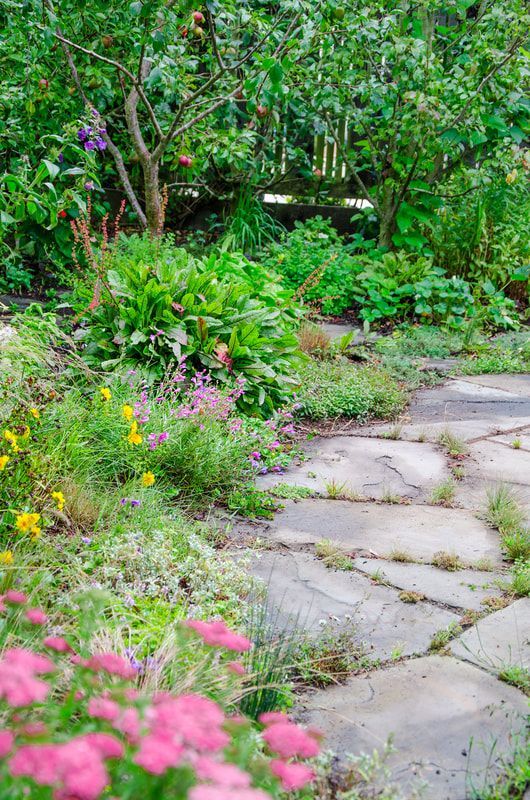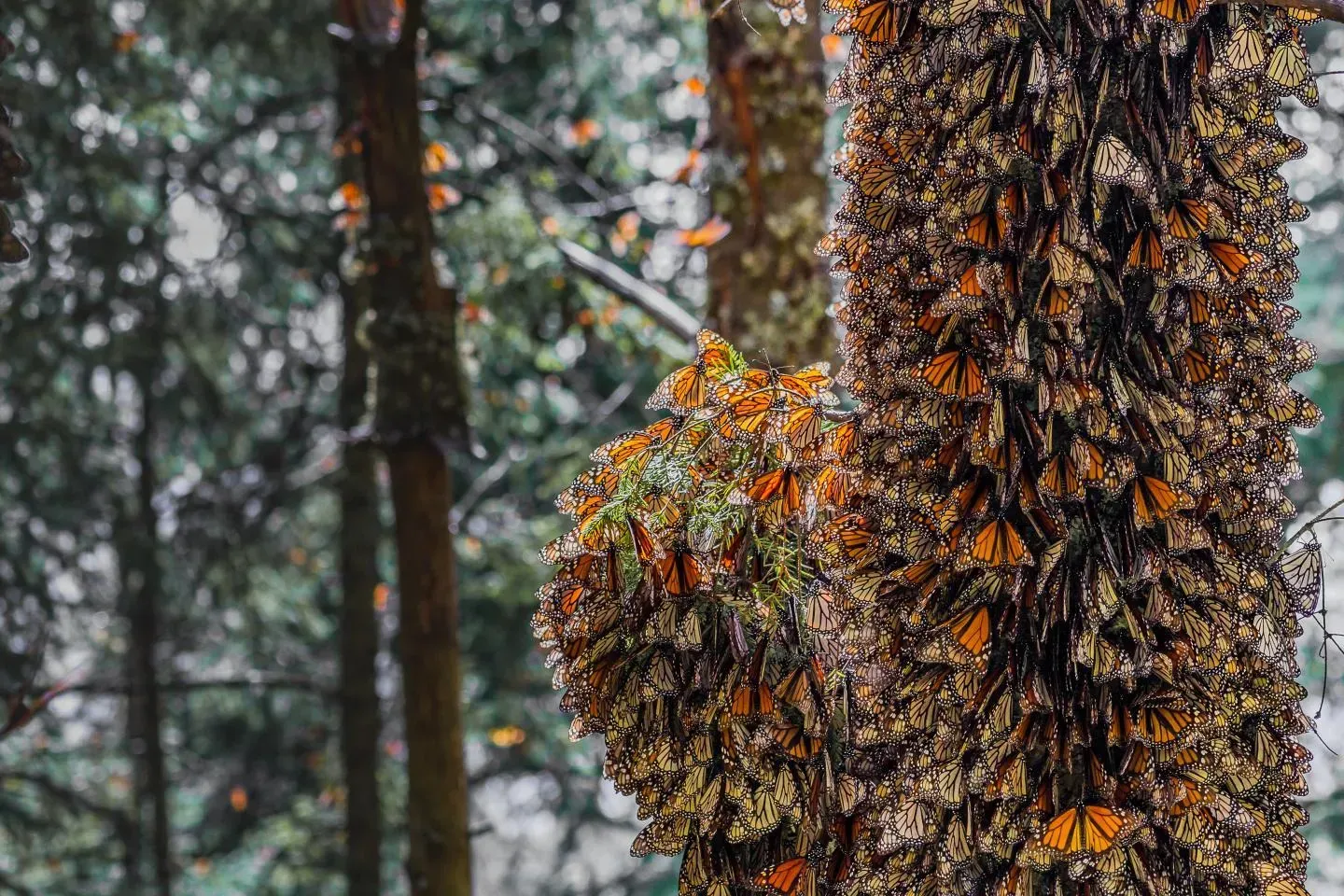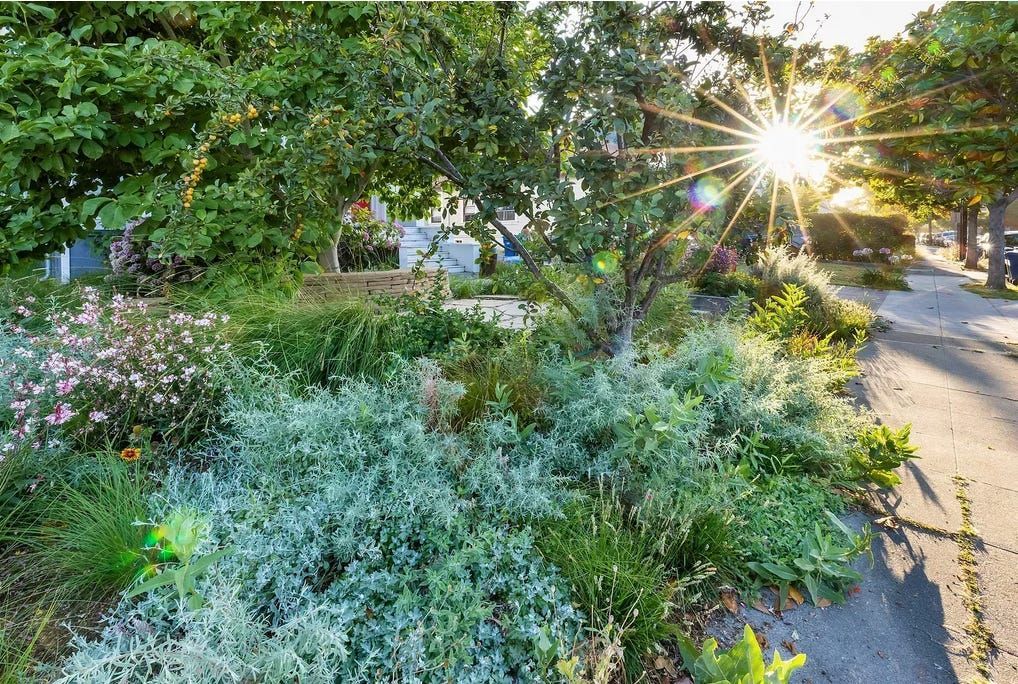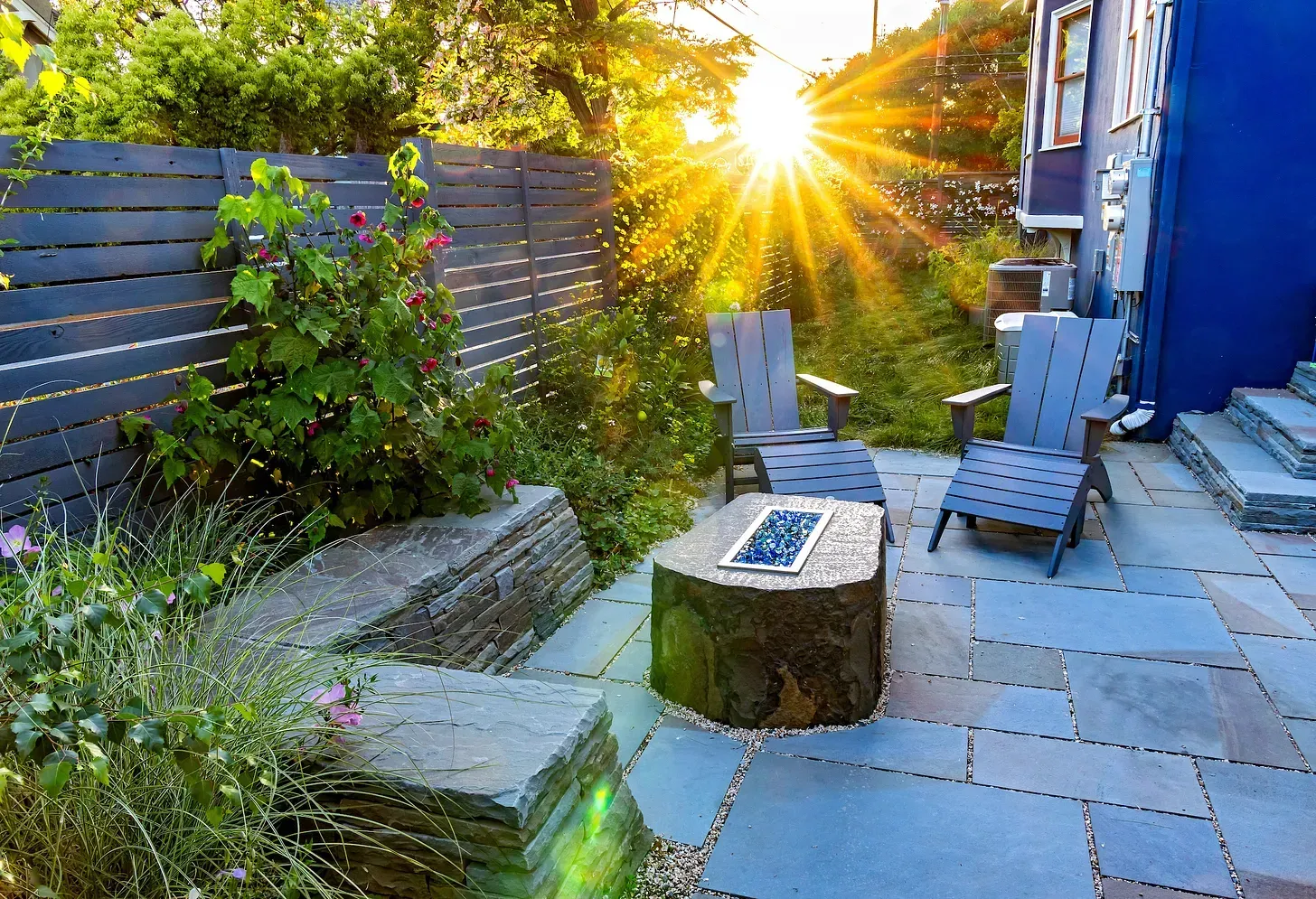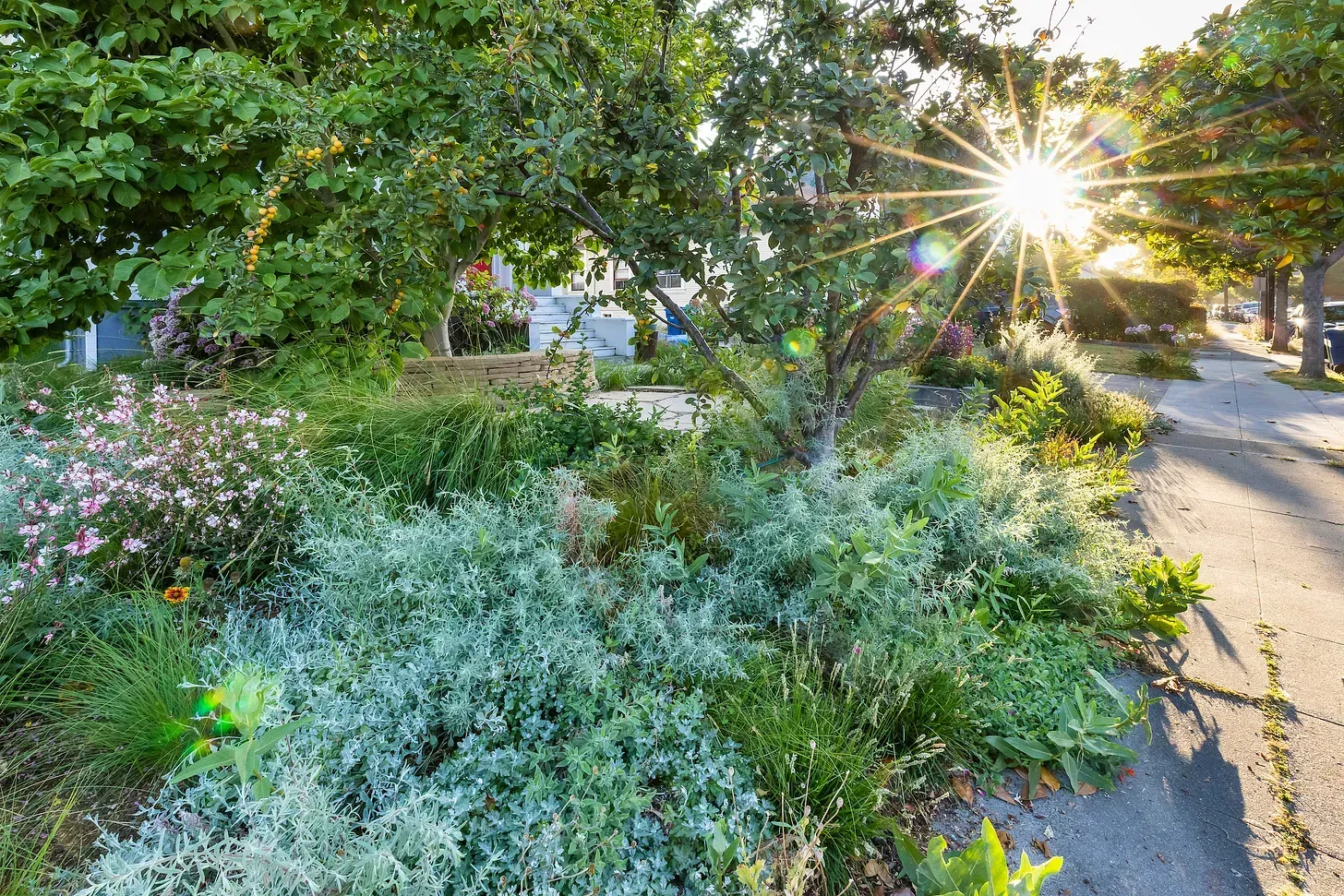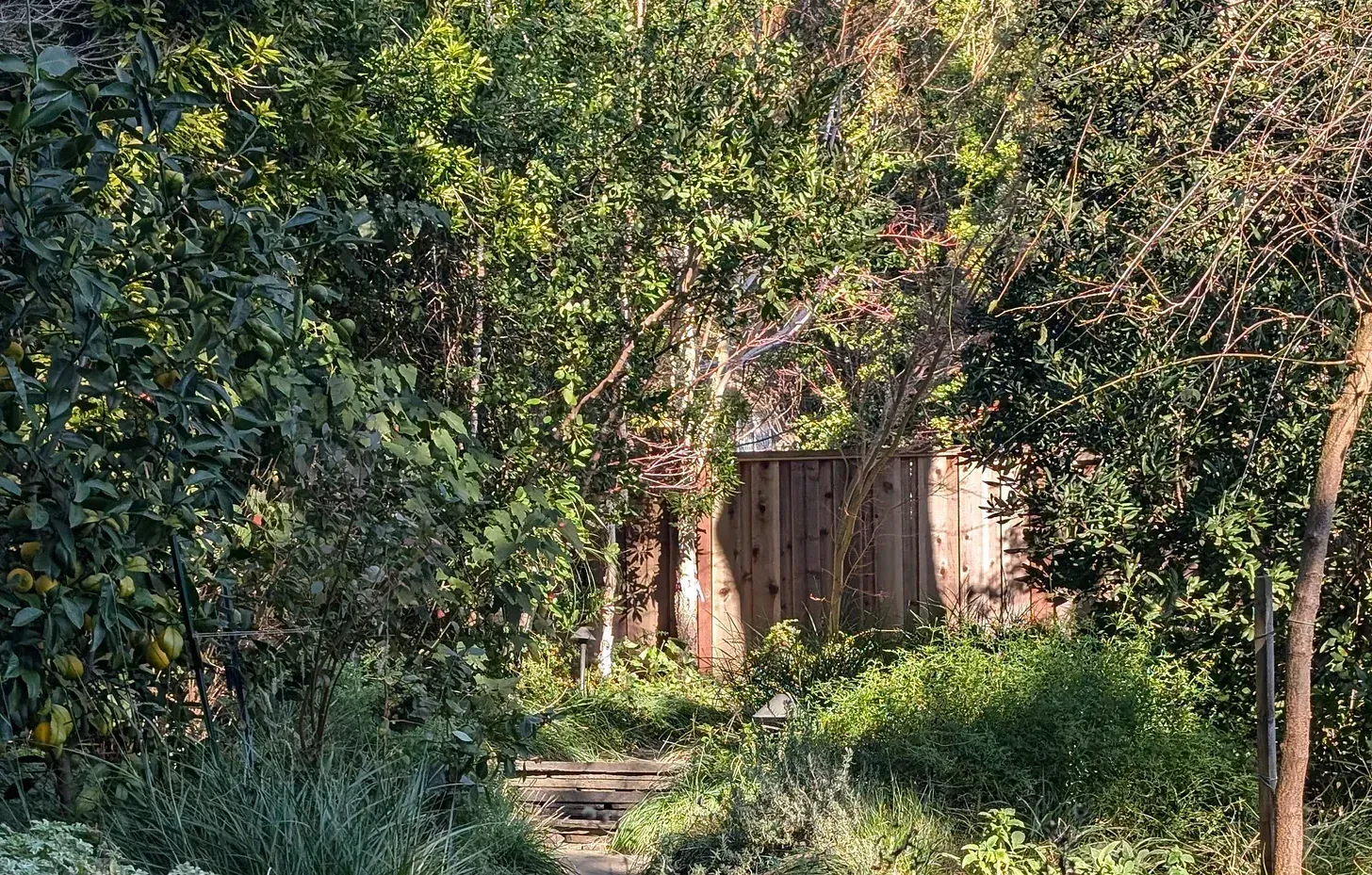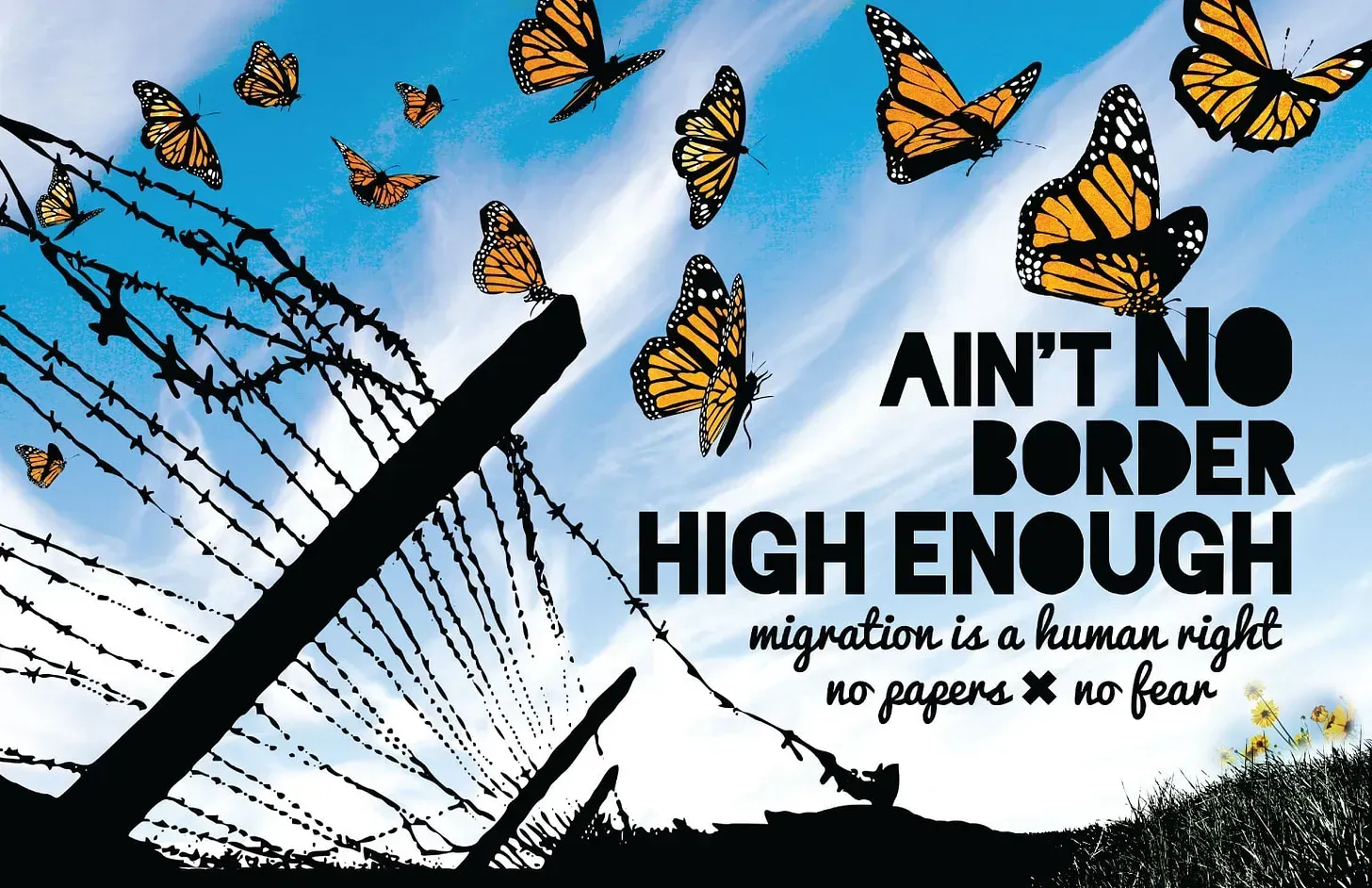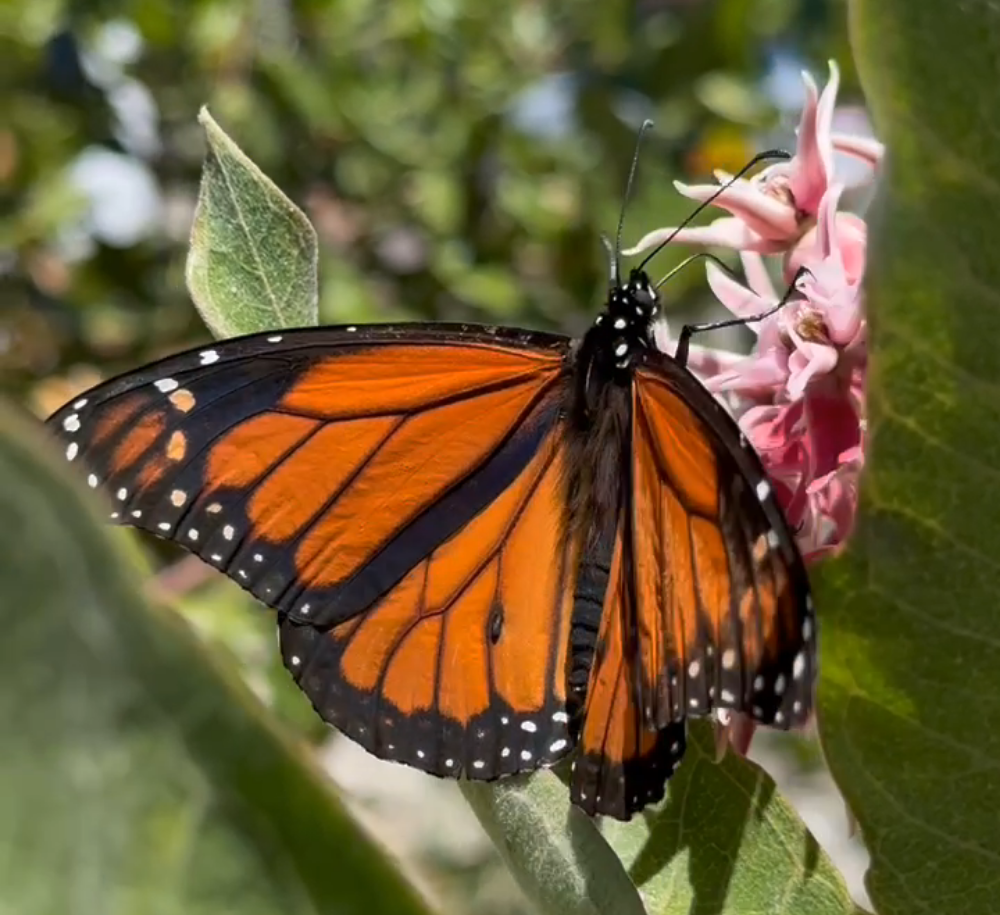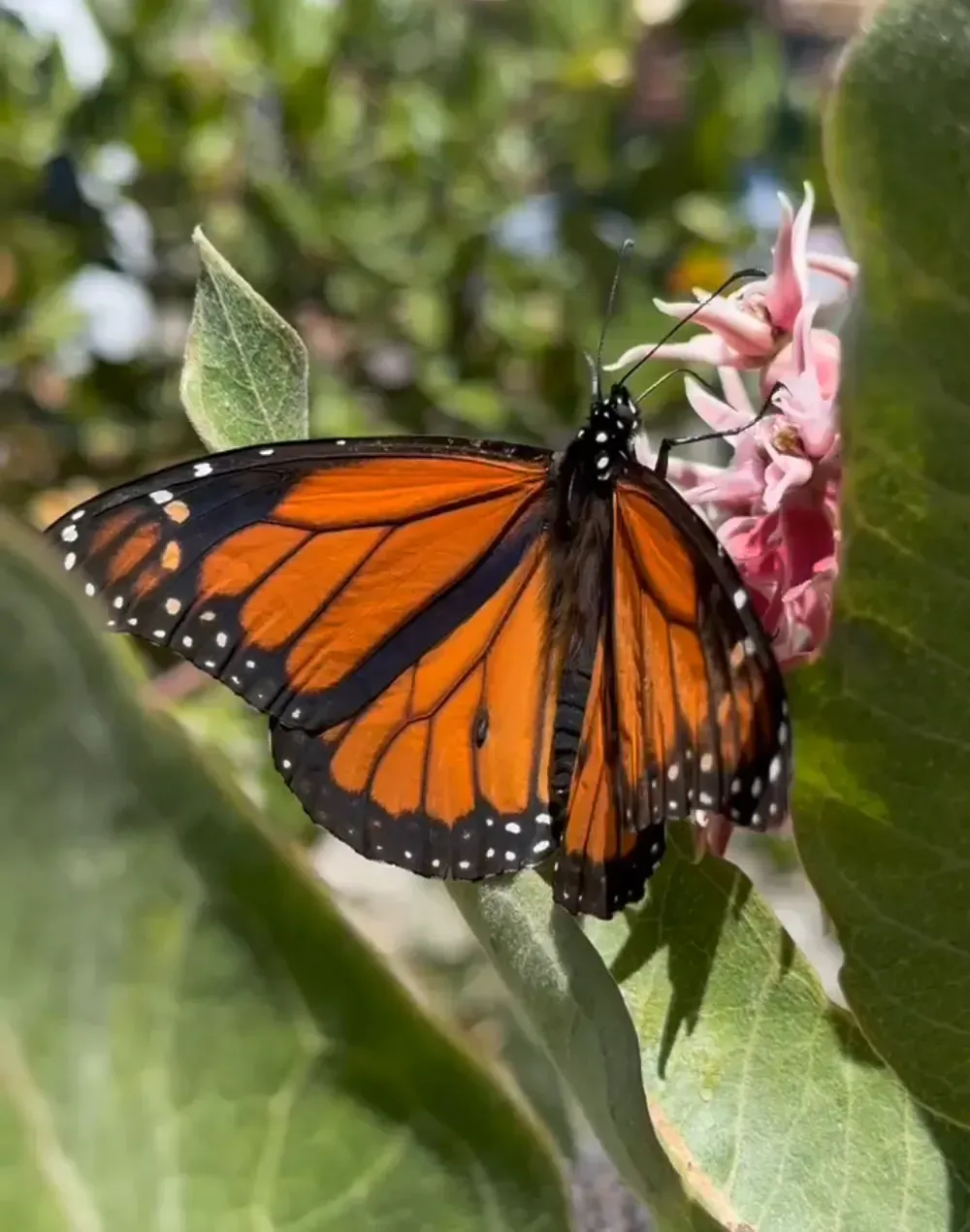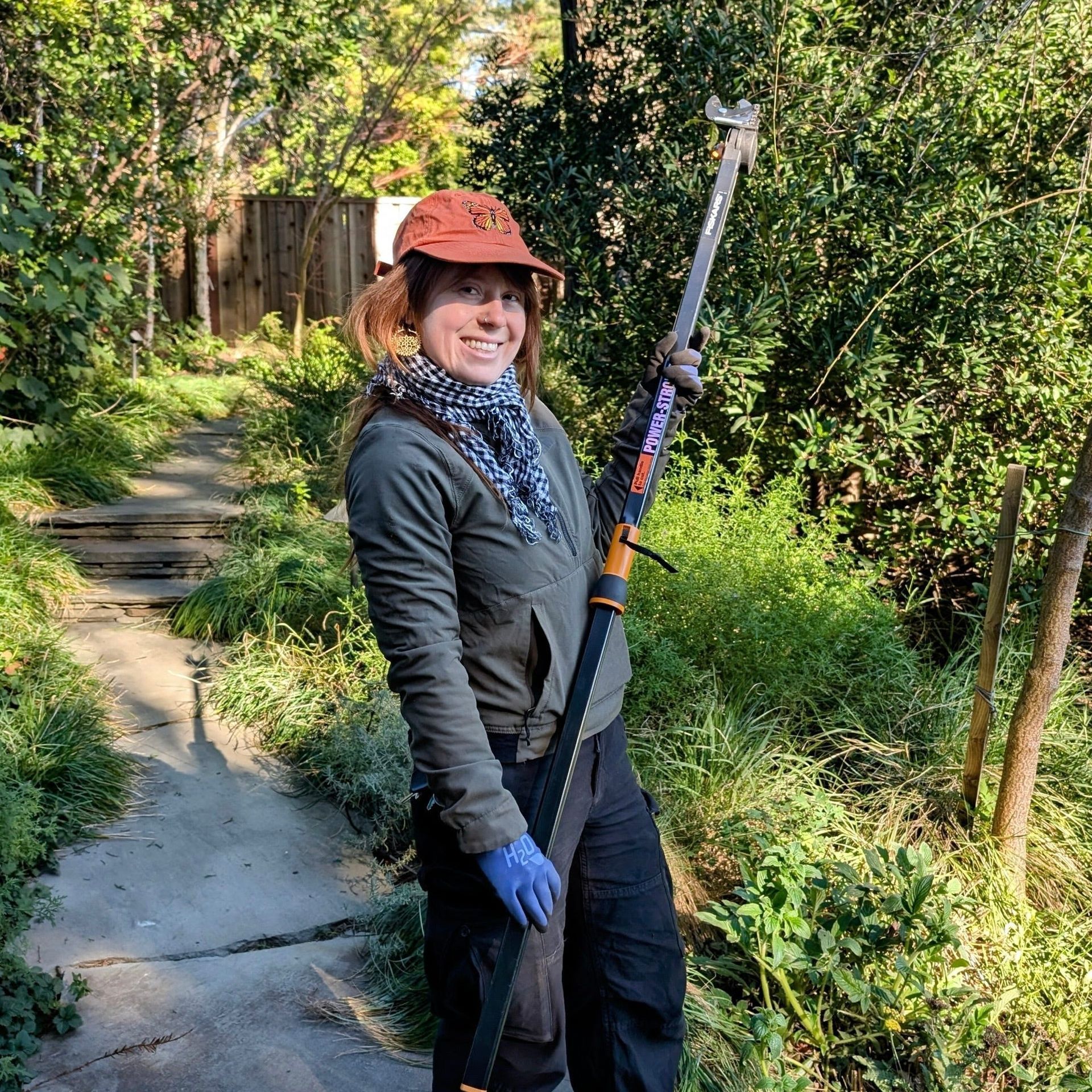Collaborate with Nature: Design the Way Nature Designs
Do you want to know how you can protect the earth and your community at the same time? Become a steward of the land by planting an ecologically and biologically diverse habitat garden. While this may sound very complicated or technical, it can really be quite easy and even fun. The following steps will help you on your way.
Build life below the soil and above the soil
A garden thrives when we encourage biological diversity both above and below the ground. At Mariposa, we choose plants and combine them in a way that maximizes biological diversity in our garden. So too we feed the soil with compost and organic matter such as turned in cover crops and organic fertilizers including bone meal, feather meal, blood meal, worm castings and manure, to maximize biological diversity below the ground.
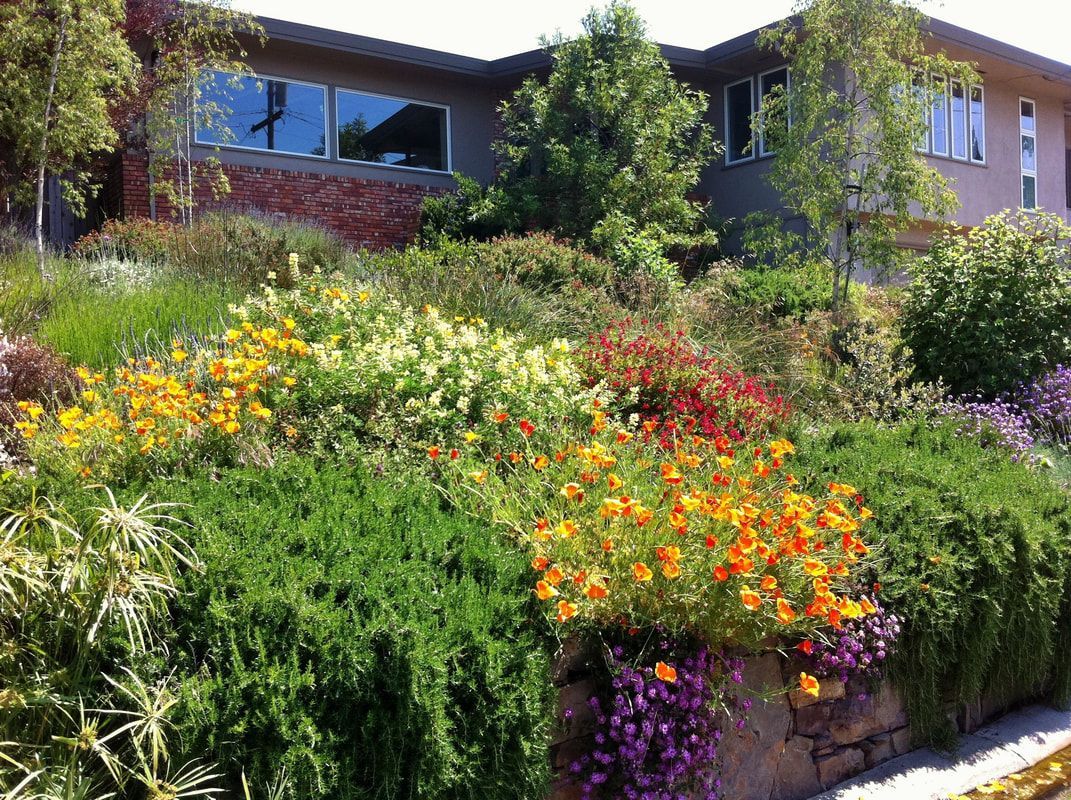
These additions break down because they are food to a myriad of microorganisms that live in the soil. The “digestion” of this material causes the microorganisms to release enzymes that feed plant roots. The greater the diversity of organic amendments, the greater the diversity of microbial activity. In turn the microbial diversity feeds the larger decomposers such as beetles and earthworms. With proper care, this environment helps the plants in your garden become healthier and more resistant to drought and pests. In other words, biologically diverse soil is the foundation for a resilient garden.
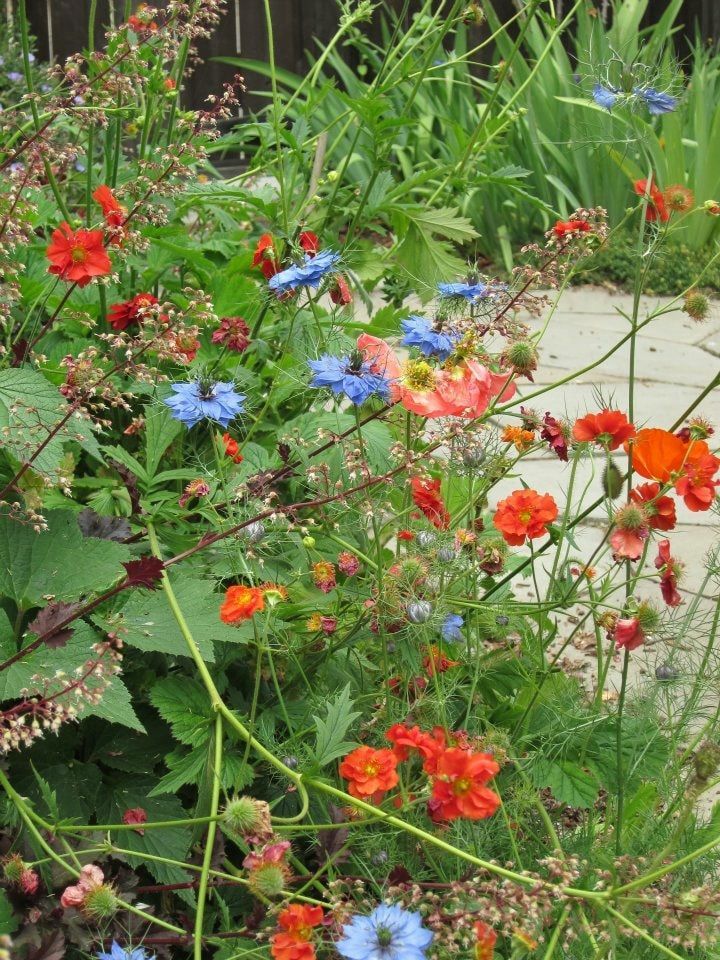
In addition to organic amendments, it is important to keep soil evenly moist. If your soil is dry it will need to be reconditioned to support life again. “Hydrophobic” soil actually repels water and can no longer absorb it, much like a dry sponge that repels a cup of water. It takes a lot of water to rescue soil from this condition. There are a few signs you can look for to know if you have hydrophobic soil:
- Soil is dry - really dry; it can even be sort of crumbly and sandy.
- Plants are wilting or dying, even though you’re watering them regularly or it’s raining.
- If you dig down 4-6”, the soil is dry.
- If you plant seeds, they fail to germinate.
- Plants grow in patches instead of spreading evenly.
- Water “ponds” on top of the soil, and takes a long time to sink in.
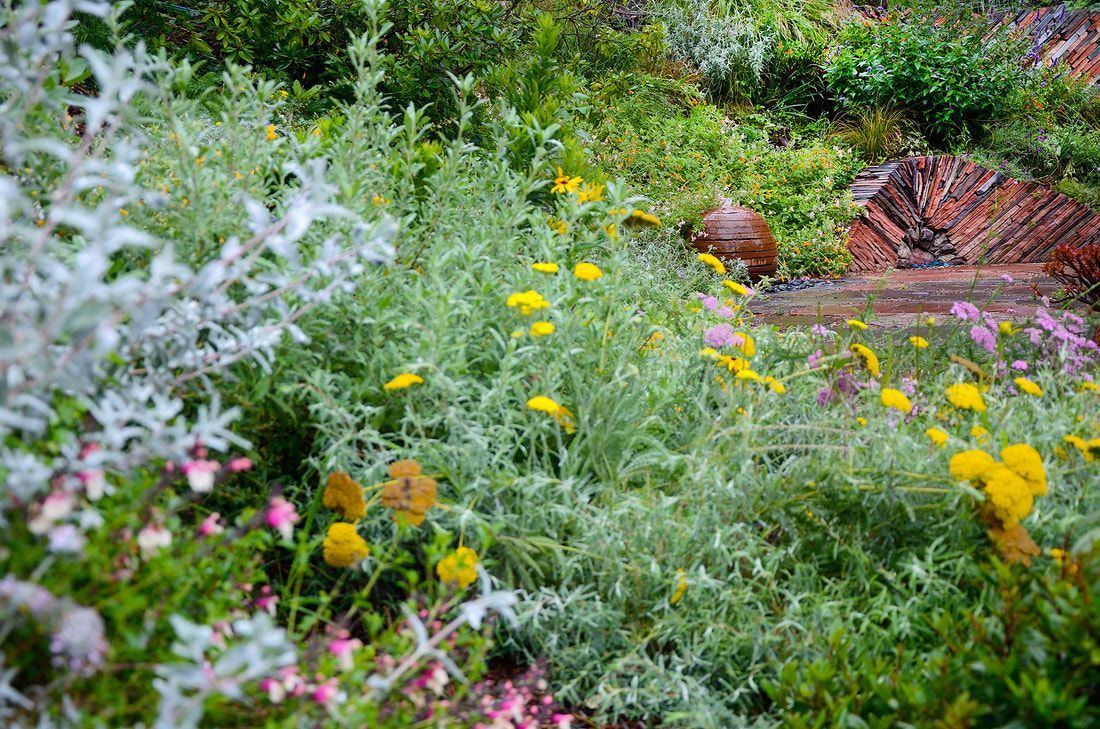
Just like a sponge, soil can be reconditioned to absorb water. Healthy soil, with plenty of organic matter such as compost and a thriving microbial environment, will wick a drop of water evenly, rather than repelling it, as it falls. To encourage microbes, supplement your soil seasonally (3-4x per year) with organic amendments such as compost or manure, and monthly with fish emulsion or compost tea.
Building up a healthy ecosystem in your soil supports a healthy ecosystem in your garden.
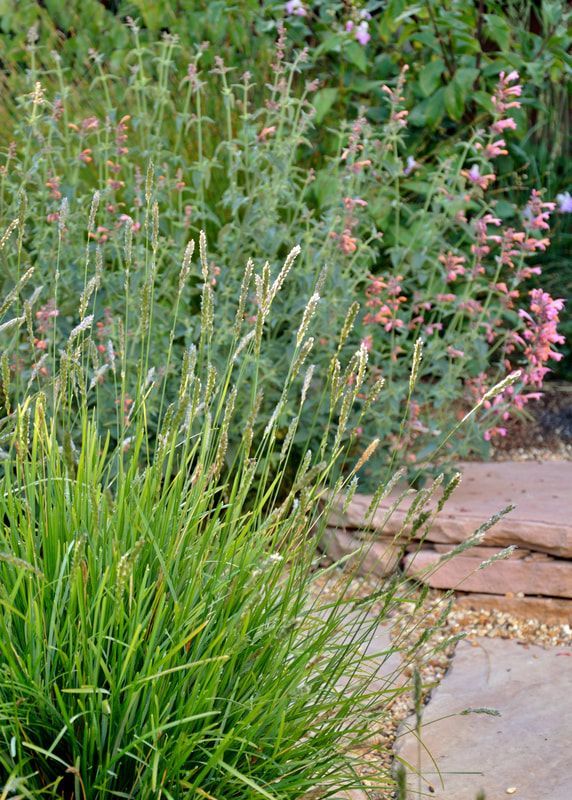
More diversity means more resiliency
Ecologists consider the number of species in an ecosystem the best way to measure its health. The more different types of plant and animal species exist in an ecological system, the stronger and healthier it becomes. When a network of species develops together, they learn to depend on each other for survival. In a biodiverse system, there are many producers, consumers, and decomposers that all work together to mutually benefit the success of all species in the system. When species diversity starts to decline in an ecosystem, the system becomes unbalanced. That is when pests and diseases can come in and wreak havoc.
Human societies are not so different. In a community or a nation, when one individual or ideology dominates, others who are not part of the ruling group may suffer from oppression or lack of opportunity, or worse. When there’s a diversity of voices within any organization, the tendency for egalitarianism increases.
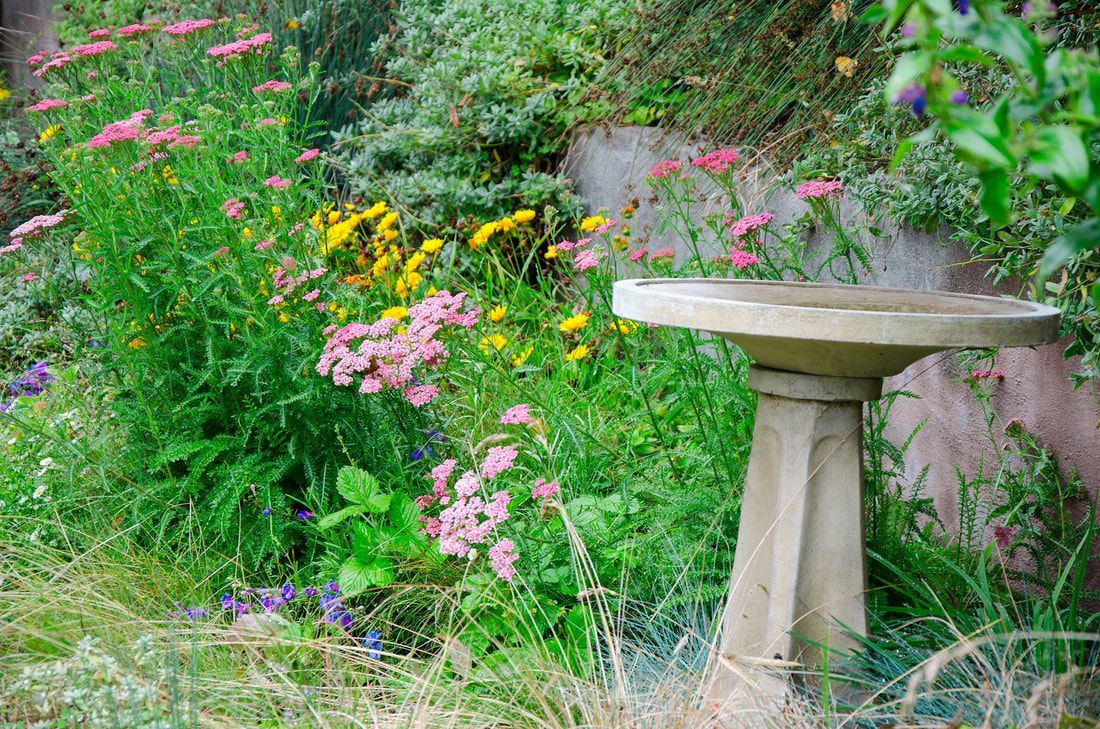
Similarly, the less diversity of plants in a garden, the more the chance a “bully” will take over. In an idealized version of the 1950’s suburban backyard, there might be a concrete patio, a large expanse of lawn, and possibly a border of shrubs along the fenceline with a few flowering perennials or annuals mixed in. This landscape is uniform and controlled. The atmosphere around the yard is neat, orderly and tight. But there’s no welcome or place for butterflies, songbirds or pollinators to flourish.
This clean and minimal landscape provides little food, water or shelter for pollinators, and does not allow for a diversity of species. What you see in this type of garden are yellowjackets, wasps, and other garden pests. These “bully” species are scavengers: they feed on the waste of humans, and can find shelter in human structures. They will also rob honeybee hives and will feed on other beneficial pollinator species.
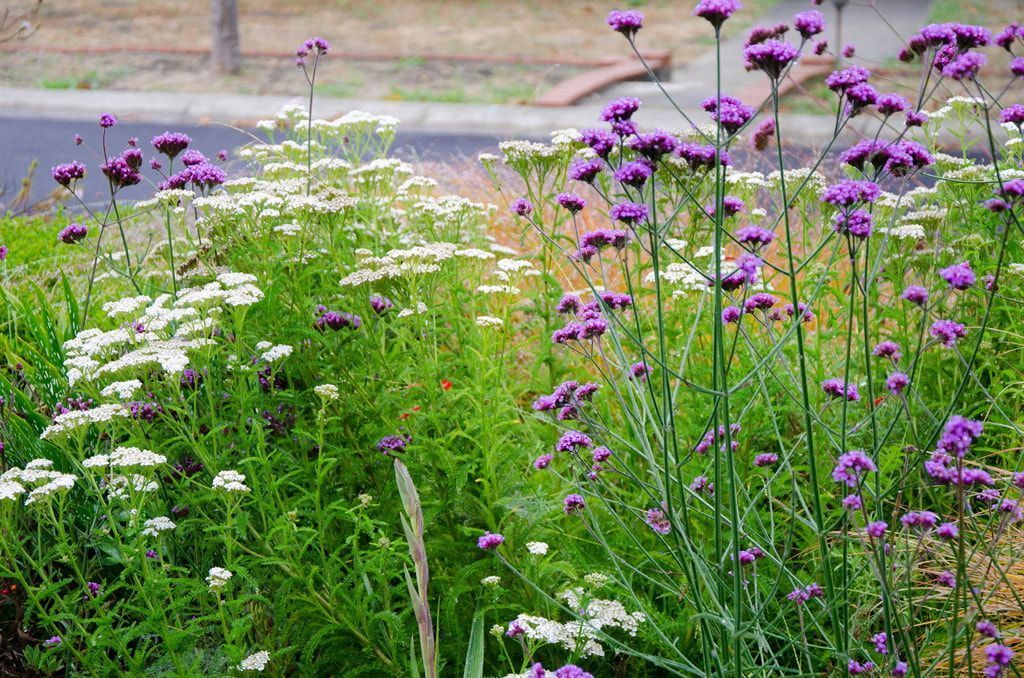
By bringing in a diverse array of plants, in the right combinations, we can attract the desirable insects that prey on the “bullies” and keep their numbers under control. When the garden is opened up to a diversity of plant species growing together and mixed in a way that supports a diversity of insects, garden pests such as yellowjackets are not able to crowd out other species.
Create habitat for birds, butterflies, and pollinators by providing food, water and shelter.
Earlier this year we wrote two posts covering this topic. Follow the links to read about:
Adding Food for Pollinators to the Garden
Adding Shelter and Water for Pollinators to the Garden
Conclusion
If you follow these simple principles, you’ll have a healthy, thriving garden. Then you can enjoy watching the diversity of bird and insect species that visit your garden grow!
